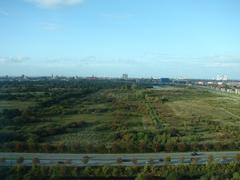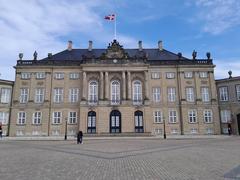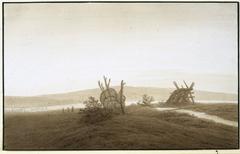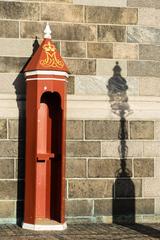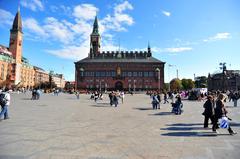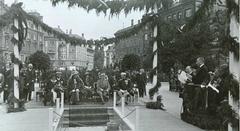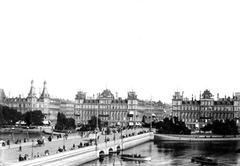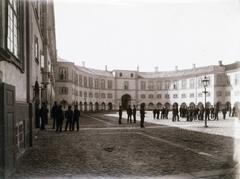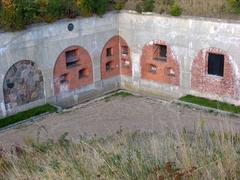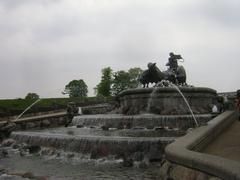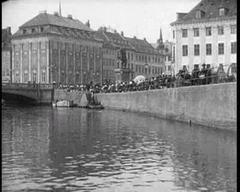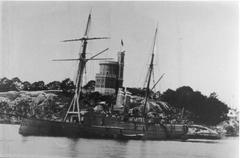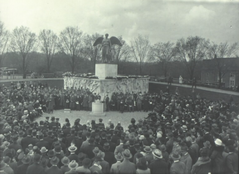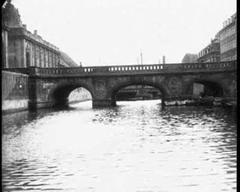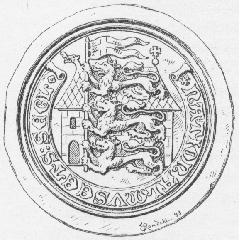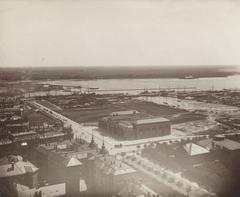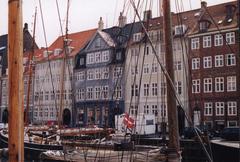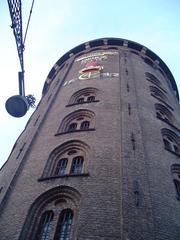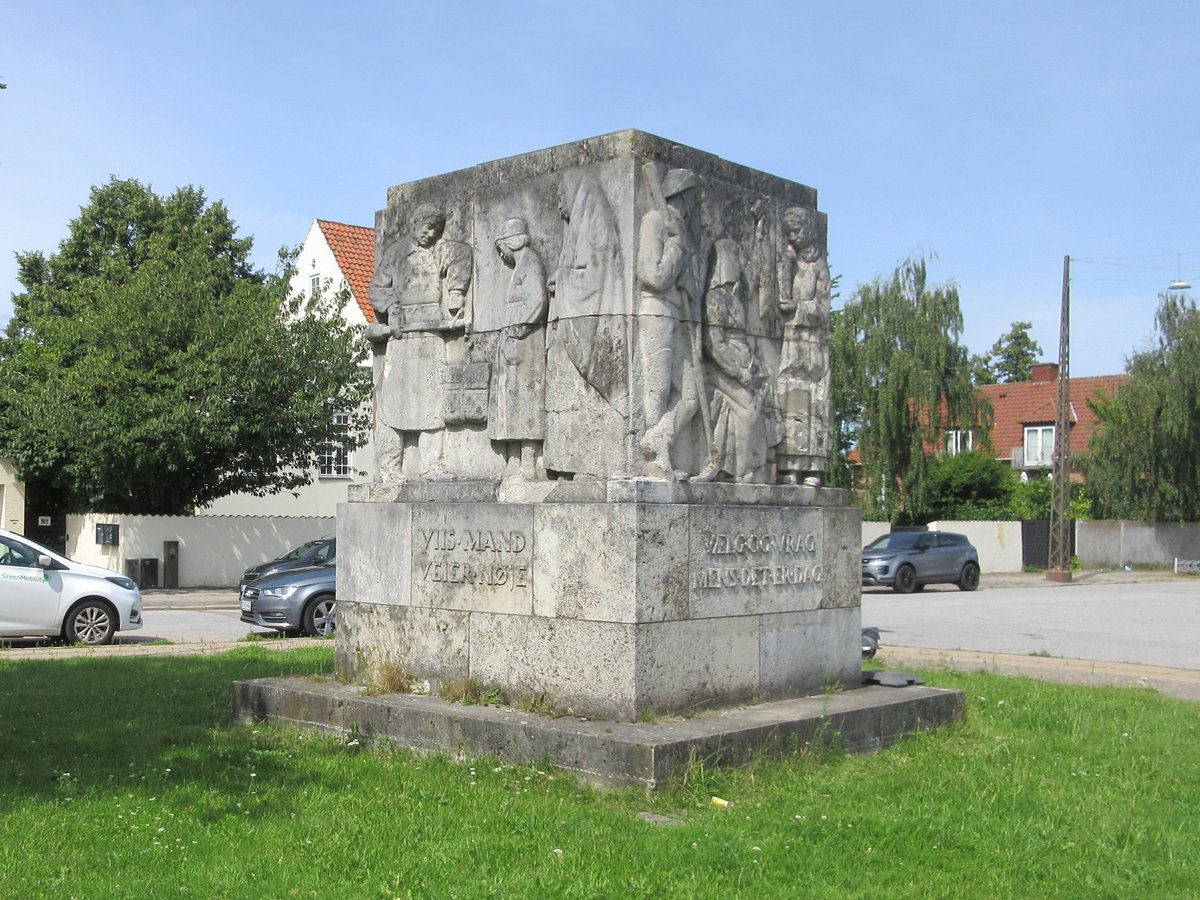
Visiting Memorial Park in Frederiksberg, Denmark: Hours, Tickets, and Tips
Date: 19/07/2024
Introduction
Memorial Park, locally known as ‘Mindelunden,’ is a profound historical and cultural landmark located in Frederiksberg, Denmark. This revered site serves as a memorial to the Danish resistance fighters who played a crucial role during the Nazi occupation in World War II. Visitors to Memorial Park can immerse themselves in the poignant history of Denmark’s struggle for freedom, highlighted by key features such as the Memorial Wall and the Execution Site, where many brave resistance members were executed (Visit Copenhagen). Established in 1947, the park not only honors the fallen heroes but also educates future generations about the sacrifices made for Danish liberty. This guide aims to provide comprehensive information on Memorial Park’s history, key attractions, visiting hours, and additional visitor tips to ensure a meaningful and enriching experience (Kulturarv).
Table of Contents
- [History of Memorial Park](#history-of-memorial-parkhistory-of-memorial-park)
- [Early Beginnings](#early-beginningsearly-beginnings)
- [World War II and the Danish Resistance](#world-war-ii-and-the-danish-resistanceworld-war-ii-and-the-danish-resistance)
- [Establishment of Memorial Park](#establishment-of-memorial-parkestablishment-of-memorial-park)
- [Key Features of Memorial Park](#key-features-of-memorial-parkkey-features-of-memorial-park)
- [The Memorial Wall](#the-memorial-wallthe-memorial-wall)
- [The Execution Site](#the-execution-sitethe-execution-site)
- [The Resistance Museum](#the-resistance-museumthe-resistance-museum)
- [Visitor Information](#visitor-informationvisitor-information)
- [Visiting Hours and Tickets](#visiting-hours-and-ticketsvisiting-hours-and-tickets)
- [Travel Tips and Nearby Attractions](#travel-tips-and-nearby-attractionstravel-tips-and-nearby-attractions)
- [Accessibility](#accessibilityaccessibility)
- [Annual Commemorations](#annual-commemorationsannual-commemorations)
- [Preservation and Maintenance](#preservation-and-maintenancepreservation-and-maintenance)
- [Educational Programs](#educational-programseducational-programs)
- [FAQ](#faqfaq)
- [Conclusion](#conclusionconclusion)
History of Memorial Park
Early Beginnings
Memorial Park, known locally as “Mindelunden,” is a significant historical site located in Frederiksberg, Denmark. The park’s origins date back to the early 20th century, but its historical significance is deeply rooted in the events of World War II. Initially, the area was a military training ground, but it was transformed into a memorial site to honor the Danish resistance fighters who lost their lives during the Nazi occupation of Denmark from 1940 to 1945.
World War II and the Danish Resistance
During World War II, Denmark was occupied by Nazi Germany from April 9, 1940, until May 5, 1945. Despite the occupation, a strong resistance movement emerged within Denmark, comprising various groups and individuals committed to sabotaging German operations and aiding the Allied forces. Memorial Park serves as a poignant reminder of the sacrifices made by these brave resistance fighters.
The park’s most notable feature is the execution site, where 197 members of the Danish resistance were executed by the Nazis. This site has been preserved to honor their memory and to educate future generations about the atrocities committed during the war. The execution site includes a memorial wall with the names of the executed resistance fighters, providing a somber reminder of the cost of freedom (Visit Copenhagen).
Establishment of Memorial Park
After the liberation of Denmark in 1945, there was a strong desire to commemorate the resistance fighters who had given their lives for the country’s freedom. In 1947, the Danish government officially established Memorial Park as a national memorial site. The park was designed to serve as a place of reflection and remembrance, allowing visitors to pay their respects to the fallen heroes.
The park’s layout was carefully planned to create a serene and contemplative atmosphere. It includes several key features, such as the Memorial Wall, the Execution Site, and the Resistance Museum. These elements work together to provide a comprehensive understanding of the Danish resistance movement and the sacrifices made during the war (Kulturarv).
Key Features of Memorial Park
The Memorial Wall
One of the most striking features of Memorial Park is the Memorial Wall, which lists the names of the 197 resistance fighters executed by the Nazis. The wall serves as a powerful symbol of the bravery and sacrifice of these individuals. Each name is accompanied by the date of execution, providing a stark reminder of the human cost of the resistance movement.
The Memorial Wall is a focal point for visitors, who often leave flowers and other tokens of remembrance. It stands as a testament to the enduring legacy of the Danish resistance and the importance of remembering those who fought for freedom (Visit Denmark).
The Execution Site
The Execution Site within Memorial Park is a solemn and haunting area where the resistance fighters were executed by firing squad. The site has been preserved in its original state, with the execution posts and bullet marks still visible. This area serves as a powerful reminder of the brutality of the Nazi occupation and the ultimate sacrifice made by the resistance fighters.
Visitors to the Execution Site often report a profound sense of reverence and reflection. The site is a stark reminder of the harsh realities of war and the courage of those who stood up against tyranny (Kulturarv).
The Resistance Museum
In addition to the outdoor memorials, Memorial Park also houses the Resistance Museum, which provides a comprehensive overview of the Danish resistance movement. The museum features exhibits on the various resistance groups, their activities, and the individuals who played key roles in the movement. It also includes personal artifacts, photographs, and documents that provide a deeper understanding of the resistance fighters’ lives and struggles.
The Resistance Museum is an essential part of Memorial Park, offering visitors a chance to learn more about the historical context and significance of the resistance movement. It serves as an educational resource, ensuring that the stories of the resistance fighters are preserved for future generations (Visit Copenhagen).
Visitor Information
Visiting Hours and Tickets
Memorial Park is open to visitors year-round. The typical visiting hours are from 8:00 AM to 6:00 PM, but it’s always a good idea to check the official website for any changes or special closures. Entrance to the park is free, making it accessible to everyone who wishes to pay their respects and learn about this significant part of Danish history.
Travel Tips and Nearby Attractions
Memorial Park is located in Frederiksberg, a district of Copenhagen. It’s easily accessible by public transport, with several bus and metro lines serving the area. Visitors can also explore nearby attractions such as Frederiksberg Gardens and the Copenhagen Zoo, making it a well-rounded day trip.
Accessibility
The park is designed to be accessible to all visitors, including those with limited mobility. There are paved paths throughout the park, and the Resistance Museum is equipped with ramps and elevators to ensure everyone can enjoy and learn from the exhibits.
Annual Commemorations
Every year, Memorial Park hosts several commemorative events to honor the resistance fighters. These events include ceremonies on significant dates, such as the anniversary of Denmark’s liberation on May 5th. During these ceremonies, government officials, surviving resistance members, and the general public gather to pay their respects and remember the sacrifices made during the war.
These annual commemorations play a crucial role in keeping the memory of the resistance fighters alive and ensuring that their contributions are not forgotten. They also provide an opportunity for the community to come together and reflect on the importance of freedom and democracy (Kulturarv).
Preservation and Maintenance
Maintaining Memorial Park is a priority for the Danish government and various heritage organizations. Efforts are made to preserve the site’s historical integrity while ensuring that it remains accessible to the public. Regular maintenance and restoration work are carried out to keep the memorials and exhibits in good condition.
The preservation of Memorial Park is seen as a vital part of Denmark’s cultural heritage. It serves as a reminder of the country’s history and the sacrifices made by those who fought for its freedom. The park’s continued upkeep ensures that future generations can learn about and appreciate the significance of the Danish resistance movement (Visit Denmark).
Educational Programs
In addition to its role as a memorial site, Memorial Park also serves as an educational resource. Schools and educational institutions often organize visits to the park as part of their history curriculum. These visits provide students with a tangible connection to the past and a deeper understanding of the impact of World War II on Denmark.
Educational programs at Memorial Park include guided tours, lectures, and interactive exhibits. These programs are designed to engage visitors of all ages and provide a comprehensive understanding of the resistance movement and its significance in Danish history (Visit Copenhagen).
FAQ
What are the visiting hours for Memorial Park?
Memorial Park is typically open from 8:00 AM to 6:00 PM. It’s advisable to check the official website for any updates or changes to the schedule.
Is there an entrance fee for Memorial Park?
No, entrance to Memorial Park is free for all visitors.
How can I get to Memorial Park?
The park is easily accessible by public transport, with several bus and metro lines serving the Frederiksberg area.
Conclusion
Memorial Park in Frederiksberg stands as a powerful testament to the bravery and sacrifice of the Danish resistance fighters during World War II. Its history, from its origins as a military training ground to its establishment as a national memorial site, reflects the enduring legacy of those who fought for Denmark’s freedom. Through its memorials, museum, and educational programs, Memorial Park ensures that the stories of the resistance fighters are preserved and remembered for generations to come. For more information, visit the official Memorial Park website or explore related articles on our site.
For more information and updates on visiting Memorial Park, be sure to check the official websites and stay connected through social media for the latest developments (Visit Denmark).
References
- Visit Copenhagen, 2023, Visit Copenhagen https://www.visitcopenhagen.com/copenhagen/mindelunden-gdk414307
- Kulturarv, 2023, Kulturarv https://www.kulturarv.dk/publicfftools/printArticle.php?artid=100
- Visit Denmark, 2023, Visit Denmark https://www.visitdenmark.com/denmark/explore/mindelunden-gdk414307

